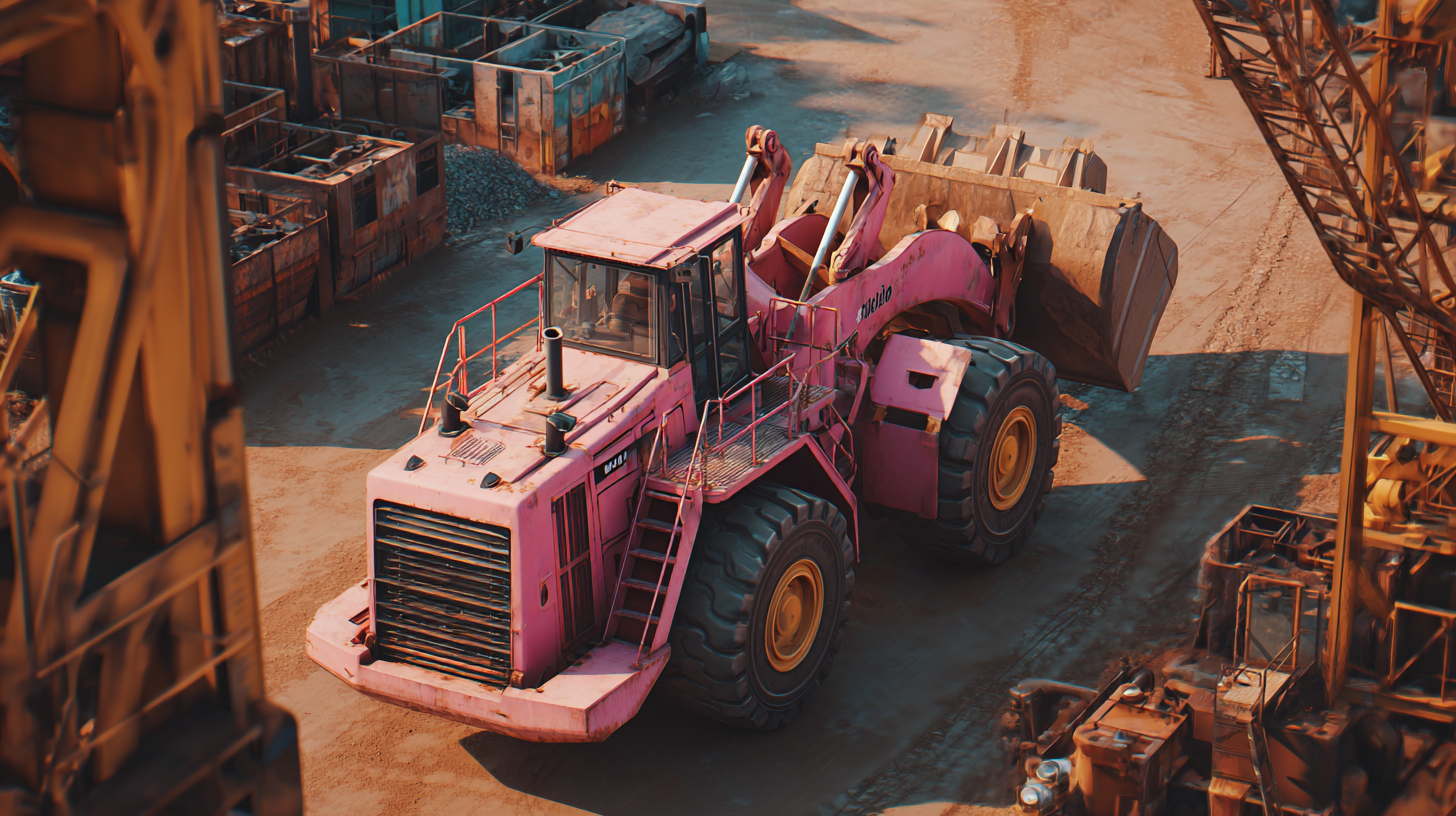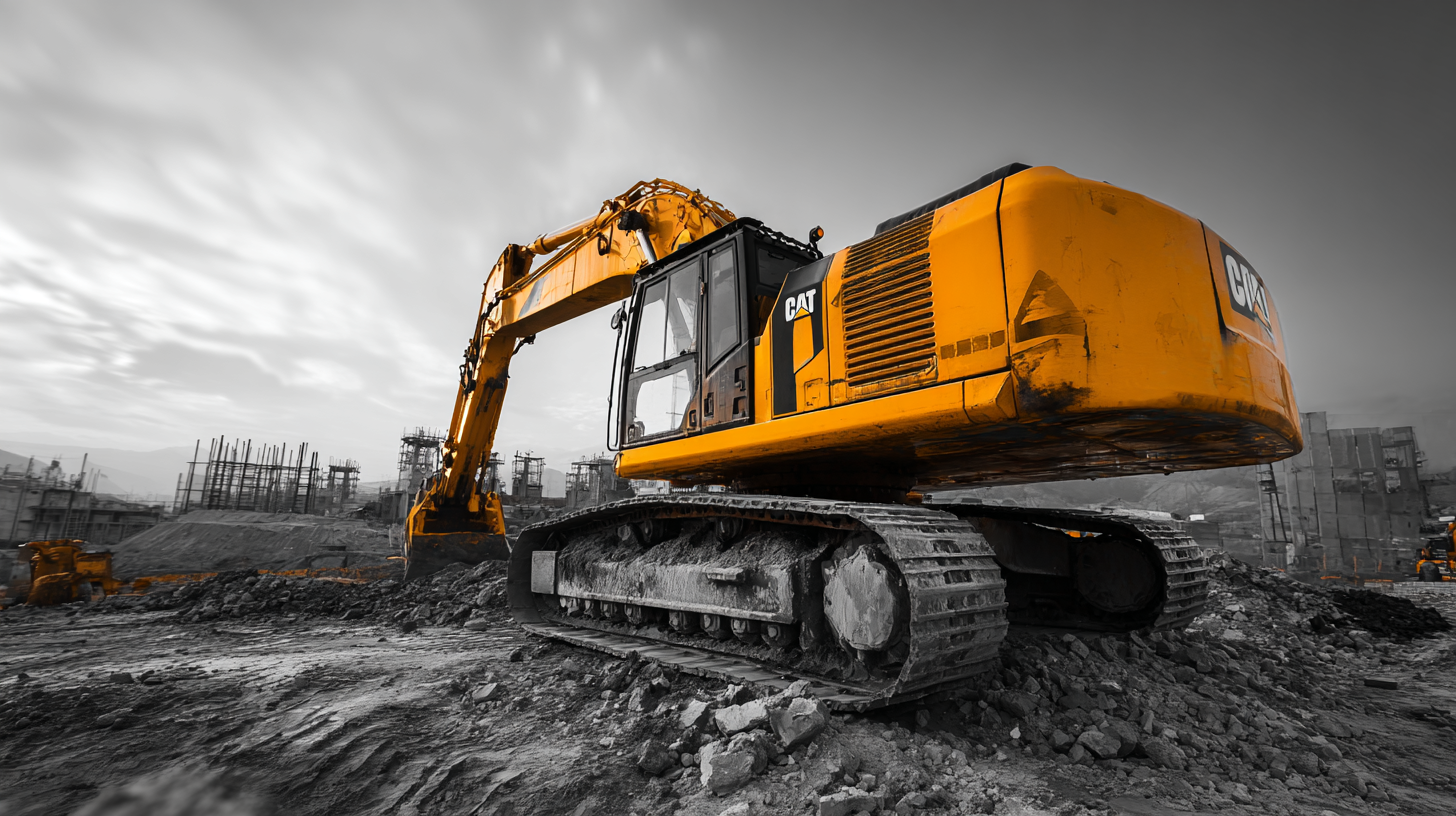Blog
Transforming Construction Sites with the Best Heavy Equipment Parts for Efficient Operations
In the ever-evolving landscape of the construction industry, efficiency and productivity have become paramount for success. One of the key aspects influencing these factors is the utilization of high-quality heavy equipment parts. As construction sites become more complex, the demand for reliable machinery and components has increased significantly. This blog will delve into how the right heavy equipment parts can transform your construction operations, ensuring not only improved performance but also reduced downtime and long-term cost savings. By exploring best practices, innovative solutions, and essential maintenance tips, we aim to provide valuable insights that will empower construction professionals to enhance their heavy equipment's productivity and reliability, ultimately leading to more successful project outcomes. Whether you're a seasoned contractor or just entering the field, understanding the importance of heavy equipment parts will be crucial in staying competitive in today’s dynamic environment.

The Future of Heavy Equipment Parts: Innovations Shaping Construction Efficiency in 2025
As we look ahead to 2025, the construction industry is set to undergo significant transformations fueled by innovative heavy equipment parts. These advancements not only promise to enhance machinery performance but also aim to improve overall safety and efficiency on construction sites. For instance, the integration of smart sensors in heavy machinery allows for real-time monitoring of equipment conditions, enabling predictive maintenance that minimizes downtime and reduces unexpected failures. This shift towards connected machinery is revolutionizing how construction projects are managed and executed.

Moreover, the development of lighter and more durable materials for heavy equipment parts is changing the landscape of construction operations. With advancements in composite materials and advanced alloys, construction machines are becoming more fuel-efficient and easier to maneuver without sacrificing strength. This not only leads to cost savings for construction companies but also significantly lowers the environmental impact of construction activities, aligning with the industry’s increasing focus on sustainability.
As we move towards 2025, these innovations in heavy equipment parts will undoubtedly reshape the efficiency and sustainability of construction processes, paving the way for a more advanced and environmentally conscious industry.
Top 5 Essential Heavy Equipment Parts Revolutionizing Job Site Productivity
In the rapidly evolving construction industry, leveraging the best heavy equipment parts can significantly enhance productivity on job sites. According to a report by the Associated Equipment Distributors, efficient machinery operation can increase project completion rates by up to 20%. With the right parts, construction teams can reduce downtimes and optimize their workflows, ultimately leading to smoother project management.

One key component revolutionizing job site productivity is the hydraulic system. Advanced hydraulic parts enable superior lifting capacity and precise control, vital for tasks requiring high-performance lifting. Additionally, modern undercarriage components improve mobility and reduce wear and tear, extending the lifespan of equipment. To maximize efficiency, construction professionals should maintain a regular inspection schedule for these essential parts, as consistent upkeep can prevent costly breakdowns.
Another critical element is the integration of telematics systems. These solutions provide real-time data on equipment performance and usage patterns, facilitating proactive maintenance and enhanced operational efficiency. As noted in a construction industry survey, companies that utilize telematics have reported a 15% reduction in fuel consumption. To further capitalize on this technology, train your operators on the insights provided by telematics, which can lead to more informed decision-making and strategic planning on job sites.
Digital Integration: How Smart Technology is Enhancing Heavy Equipment Performance
In today's construction industry, the integration of smart technology into heavy equipment is transforming the way projects are managed and executed. Digital tools such as IoT sensors, GPS tracking, and advanced analytics are being utilized to enhance equipment performance, ensuring that operations are not only efficient but also cost-effective. These technologies enable real-time monitoring of machinery, allowing operators to predict maintenance needs and reduce downtime, ultimately improving productivity on construction sites.
Furthermore, digital integration fosters better communication among teams, as shared data can be accessed and analyzed by project managers and workers alike. This level of connectivity streamlines workflows and enhances decision-making processes, as stakeholders are equipped with the necessary insights to optimize their resources. As heavy equipment continues to evolve with smart technology, the potential for operational efficiency is significant, paving the way for a new era in construction management where informed decisions drive successful project outcomes.
Transforming Construction Efficiency with Smart Technology
This chart illustrates the performance improvements in heavy equipment facilitated by digital integration and smart technology. The data represents productivity increases across different equipment types over the last year.
Best Practices for Selecting Quality Heavy Equipment Parts for Construction Operations
When it comes to selecting quality heavy equipment parts for construction operations, there are several best practices that can significantly enhance efficiency and reduce downtime. First, it's essential to understand the specific needs of your equipment. Each piece of machinery has unique requirements, so ensure that you consult the manufacturer’s specifications when sourcing parts. This will help you avoid compatibility issues and guarantee that you are investing in components designed for optimal performance.
Moreover, prioritizing quality over cost is crucial. While it may be tempting to choose cheaper alternatives, high-quality parts often translate to better durability and reliability. Look for trusted brands or certified manufacturers that provide warranties and after-sales support. Additionally, consider conducting regular maintenance checks to ensure that your equipment operates smoothly. This proactive approach not only prolongs the lifespan of your machinery but also helps you pinpoint potential issues before they escalate, saving both time and money in the long run.
Sustainability Trends: Eco-Friendly Heavy Equipment Parts for a Greener Construction Industry
The construction industry is at a pivotal point, embracing sustainability as a core principle. According to a report from the
Global Sustainable Construction Market, eco-friendly heavy equipment parts can reduce energy consumption by up to
30% and significantly lower greenhouse gas emissions. Implementing sustainable
machinery not only helps companies comply with increasingly stringent environmental regulations but also positions them
competitively in a market that values ecological responsibility.
Companies are increasingly turning to supplies made from recycled materials or serviceable components that extend equipment life.
Using parts that adhere to sustainability standards demonstrates a commitment to reducing the industry's overall carbon footprint.
Additionally, utilizing advanced technology in equipment parts—such as smart sensors—can
optimize operations to enhance efficiency, leading to further resource savings.
Tip: When choosing heavy equipment parts, prioritize those with certifications
that indicate eco-friendliness, such as ENERGY STAR or ISO 14001.
Tip: Regular maintenance and upgrades of existing equipment with sustainable
options can be a cost-effective strategy. Not only does it improve the longevity of machinery, but it also aligns with sustainable
practices that are becoming essential for market viability.
